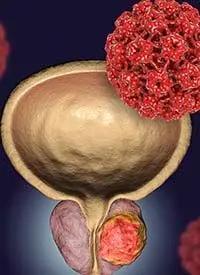Article
SBRT safety noninferior to conventional radiotherapy in prostate cancer
Author(s):
At 24 months, grade ≥2 GU toxicities occurred in 2% of those receiving conventional radiotherapy vs 3% of those treated with SBRT.

Two-year follow-up data from the phase 3 PACE-B trial (NCT01584258) showed that five fraction stereotactic body radiotherapy (SBRT) has noninferior toxicity and is delivered over a much shorter time period versus conventionally fractionated radiotherapy in patients with prostate cancer.1
At 24 months, Radiation Therapy Oncology Group (RTOG) grade 2 or worse genitourinary (GU) toxicities—one of the study’s co-primary end points—occurred in 2% of those receiving control radiotherapy compared with 3% of those in the SBRT cohort. Moreover, RTOG grade 2 or worse gastrointestinal (GI) toxicities were observed in 3% of those in the control radiotherapy cohort and 2% of those in the SBRT cohort.
A total of 874 patients enrolled in the open-label trial. Patients were randomly assigned 1:1 to receive either conventional radiotherapy (n = 441) or SBRT (n = 433). Patients in the control group received 78 Gy in 39 fractions over 7.8 weeks or 62 Gy in 20 fractions over 4 weeks. In the other cohort, patients received 36.25 Gy of SBRT in 5 fractions over 1 to 2 weeks.
Patients were eligible to participate in the study if they had a World Health Oorganization performance status of 0 to 2, low-risk or intermediate-risk histologically-confirmed prostate adenocarcinoma, and at least 10 biopsy cores taken up to 18 months prior to randomization.
Secondary end points for the trial included the cumulative incidence of RTOG grade 2 or worse GU and GI toxicity up to 24 months, Common Terminology Criteria for Adverse Events (CTCAE) grade 2 or worse erectile dysfunction, and other CTCAE parameters such as hot flashes, fatigue, anorexia, weight loss, and radiation dermatitis.
At baseline, the patient median age was 69.7 years (range, 65.6-74.0) for the control radiotherapy cohort and 69.6 years (range, 65.4-73.8) for the SBRT group. Most patients in each respective arm had T2c tumors (39% vs 36%). Moreover, most patients in the control radiotherapy and SBRT arms, respectively, had National Comprehensive Cancer Network intermediate-risk prostate cancer, (90% vs 92%) and Gleason scores of 3+4 (80% vs 85%).
The trial prospectively included a subgroup analysis comparing patients who received SBRT using robotic non-coplanar radiotherapy (CyberKnife) compared with conventional linear accelerator (linac). Differences in CTCAE GU toxicity profile for robotic non-coplanar radiotherapy and conventional linac were seen in dysuria, incontinence, and retention of CTCAE elements; however, the differences were small. Differences between control radiotherapy delivered by robotic non-coplanar radiotherapy and linac were not significant. CTCAE grade 2 or worse GU incidents were observed in 4% of patients who received robotic non-coplanar control radiotherapy and 9% of those given CRT via a conventional linac center. Investigators did not observe any serious adverse effects (AEs) or any treatment-related deaths within during the analysis.
Reference
1. Tree AC, Ostler P, van der Voet H, et al. Intensity-modulated radiotherapy versus stereotactic body radiotherapy for prostate cancer (PACE-B): 2-year toxicity results from an open-label, randomised, phase 3, non-inferiority trial. Lancet Oncol. 2022;23(10):P1308-1320. doi:10.1016/S1470-2045(22)00517-4
















